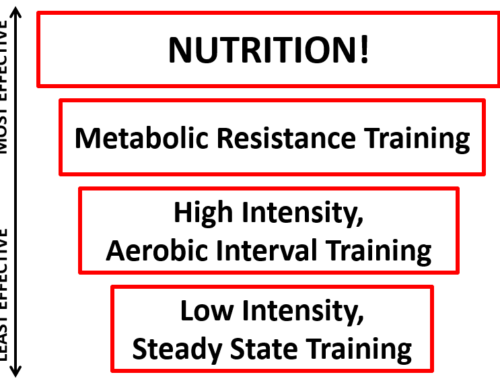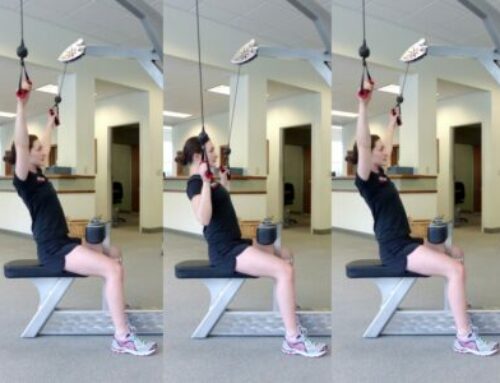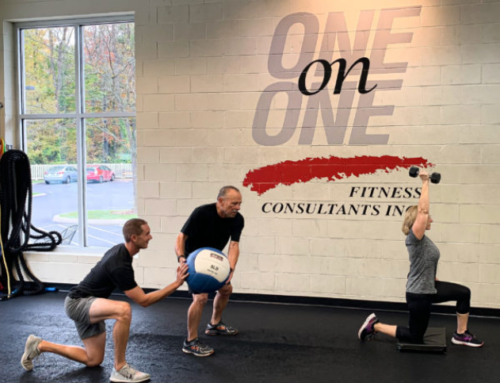
Endurance training (otherwise known as aerobic or cardio training), is typically the protocol of choice for those either training for a specific endurance event (i.e. 5K, marathon, triathlon, etc.) or looking to change their body composition. Obviously, endurance athletes need to perform high volumes of endurance activity in order to be successful. However, for those of us simply looking to maintain or improve our body composition and/or fitness level, endurance training alone might not be the most efficient use of time. The key is to combine good nutrition and plenty of strength training with this longer duration, more sustained exercise.
Some benefits of endurance training include:
- Resting heart rate decreases as the heart and respiratory muscles get stronger
- Blood pressure improves as the heart and vascular system become more efficient at pumping blood
- The vascular and muscular systems become more efficient at delivering and extracting oxygen for the use of energy production, therefore burning more calories
- Mood and sleep quality improves
- Fat metabolism increases
Any physical activity that gets your heart rate up and keeps it up for an extended period of time qualifies as endurance training and will elicit these benefits.
Here is how to get the most out of your endurance training:
Be purposeful with your endurance training
One big advantage to endurance training is that it is relatively simple to perform. Because of its simplicity, it is easy to lose focus and just go through the motions. As with all of your training, have a specific plan from the outset.
Monitor your intensity
As mentioned above, it is easy to “fuzz out” during endurance training. For some, heart rate monitors or MyZone are helpful, but for most of us, a simple assessment of perceived exertion will suffice. Ask yourself, “on a scale of 1-10, how hard am I working?” When working at a “7-8” (75% max effort), you should feel like you can maintain that intensity for no more than 30 minutes. If you’re cruising along and feel like you can go for an hour, you should consider picking it up.
Keep in mind that you’re monitoring your intensity (i.e. your perceived exertion), not the setting on the machine. With a properly designed endurance training program, you may need to bump up the settings (i.e. mph and grade on a treadmill or rpms and resistance on a bike) to elicit the desired response.
Work hard
Although we may burn more fat during the workout itself by going at a lower intensity (55-65%), we burn more fat overall by working at a slightly higher intensity (75-85%) due to the effects of EPOC. If burning calories is the goal of the endurance training session, we shouldn’t be as concerned about fuel utilization during the session as fuel utilization after the session.
Save your Joints
Research shows that although the health and fitness benefits of endurance training are numerous, too much of the same type of training can quickly lead to overuse injuries. Using different formats, modifying your weekly schedule, and monitoring your intensity is perfect for cross training.
Keep your body guessing
Let’s say you get 2-3 endurance workouts per week. If you always give your body the same stimulus on the same days, you will quickly adapt and not get the desired result. At One on One, we’ve created endurance training protocols that will help keep your body guessing:
The 2-Minute Buildup:
The 2-Minute Buildup allows you to train for a long-duration, but with a progressive system of increasing intensity. Every two minutes, increase the intensity from approximately 60% of perceived max effort, to 70%, to 80%, then back to 60% and start over.
Interval Training:
Interval Training involves bursts of high-intensity work interspersed with periods of low-intensity work. The high-intensity periods are typically at or close to near-maximum exertion, while the recovery periods may involve either complete rest or activity of much lower intensity. The duration of the Interval Training workout, as well as the time ratio of work/rest depends on your fitness level and training objectives.
The Sprint Workout:
With the Sprint Workout, you go for 2 1/2 minutes at 55%-65% of max effort, followed by 30 seconds of all-out (90% – 95%) sprint. You will definitely need the two and a half minutes to recover prior to sprinting again. In thirty-minutes, you get 10 cycles of sprint/recover…talk about maximizing your time exercising!
Be purposeful with your endurance training and you can expect a lifetime of good cardiovascular health and healthy body composition. Be sure to talk with your trainer this week to make sure your endurance training program is on track!




